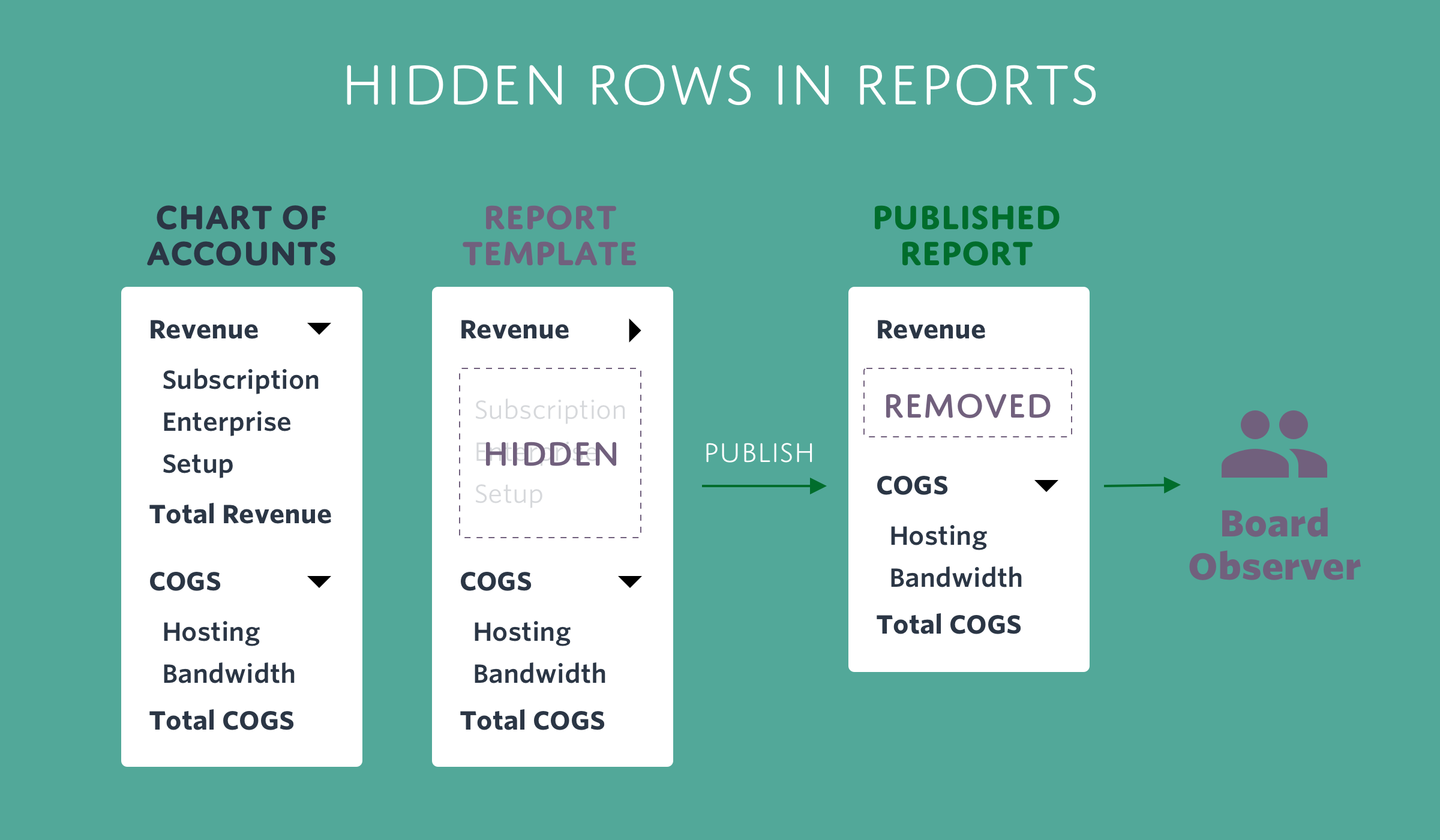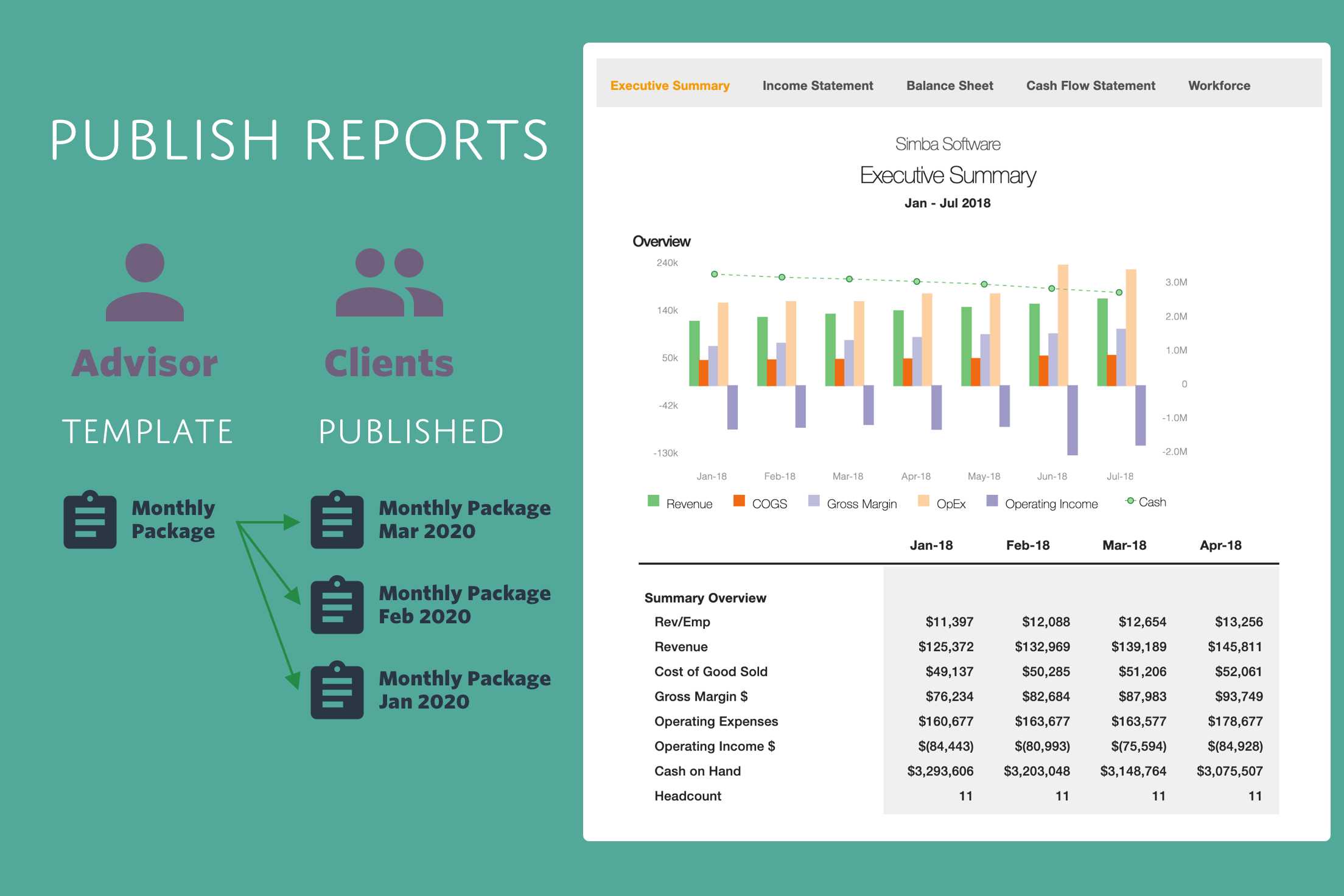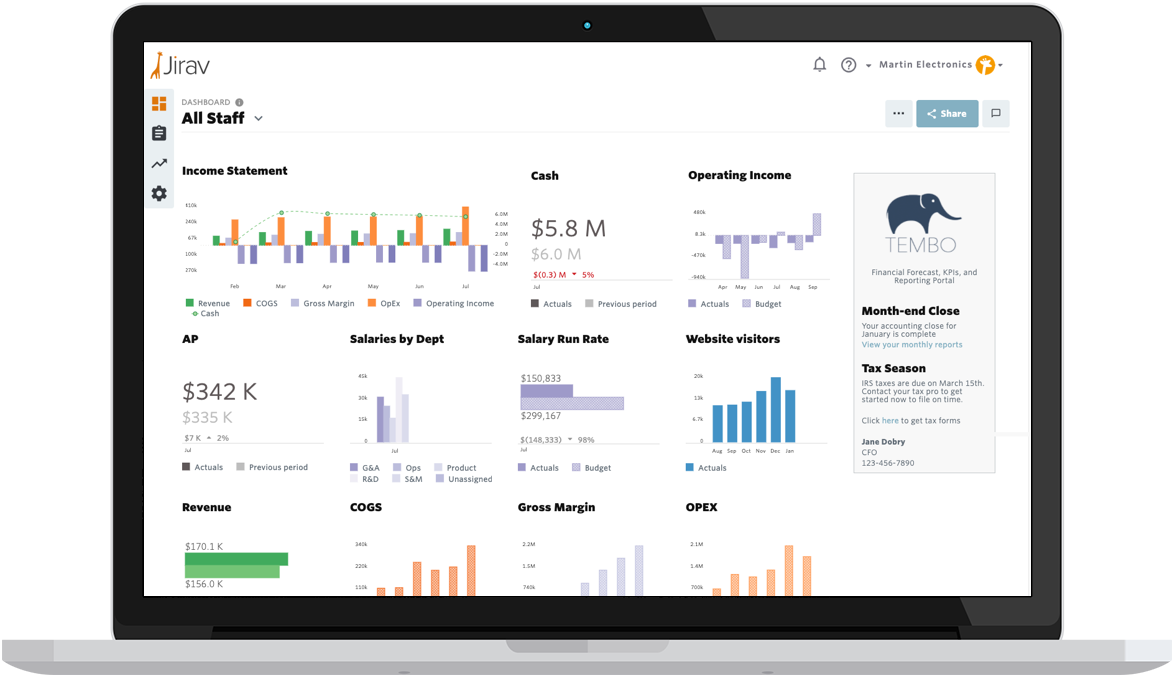An executive summary is a powerful tool in the hands of business owners (or your accounting clients). Keep those two words and their meanings at the front of your mind: executive summary.
Dictionary.com defines executive to mean “a group of persons having supervisory authority in an organization,” and summary as “a comprehensive and usually brief abstract.” In other words, an executive summary should be an easy to understand, high-level view of what’s going on in the business during the reporting period.
Financial reporting best practices show that to make the most of this summary, it must contain a cohesive combination of important metrics. These metrics should be informative and allow for high-level decisions, but not so much to confuse the reader.
After looking through the executive summary, the recipient should expect to have a clear picture of the reporting period. For example, if your executive summary is reporting for the full current year, it should show a monthly view of the year-to-date actuals plus the forecast for the remaining periods.
What is an executive summary?
An executive summary is a high-level overview of the business for the desired reporting period. Adding an executive summary to your regular financial reporting packages allows readers a brief overview of the current and planned state of the business.
As part of your monthly reporting package, the report might simply show the current full year (actuals YTD + forecast). However, during a longer-term planning exercise, it may be helpful to show the following five years on a quarterly basis.
In addition to various metrics from the income statement and balance sheet, an effective executive summary also includes critical financial ratios highlighting areas where the business is performing well and not so well.
These could be cash and profitability metrics; human resources KPIs like headcount by department or total salaries; or other important metrics like MRR (monthly recurring revenue), churn, or days receivable outstanding.
Why do we need an executive summary, and what is it for?
Good financial reporting is intended to help the management team make informed decisions about the business quickly.
External financial reporting fulfills legal requirements and is generally not intended for internal decision making. On the other hand, internal reporting—things like management or executive summaries—are designed to help managers make decisions about the direction of the business. This internal, or managerial, reporting shows how the company is performing against internal targets and highlights areas where corrective action should be taken.
A well-designed executive summary, aligned with financial reporting best practices, allows management to quickly grasp both what is going well and what needs to be improved. If some part of the company isn’t achieving its objectives, either because things are not going to plan or the plan isn’t aggressive enough, it should be visible in the summary.
Essentially, the executive summary is an overview of all critical business information in one easy-to-understand package.
Common mistakes with executive summaries
Maintaining an executive summary in your reporting package is considered a financial reporting best practice. The report brings value by representing your business in a one-page overview, allowing managers to quickly determine corrective actions.
But in order for your summary to bring as much value as possible, it’s critical to avoid a few common mistakes.
Too much information
Because it’s a summary and not your financial statements in their entirety, the information in your executive summary should be distilled down to key bullet points. That doesn’t mean you can’t show the full P&L, but you probably don’t need to show each and every account.
This might mean summarizing your P&L lines and turning them into a bar chart, or focusing on the KPIs that currently matter the most. For example, in the growth stage, MRR and the number of customers might be more important than dissecting admin expenses or the cost of goods sold.
Not tailoring the message
Different departments might need different messages. For example, sales and marketing may want more focus on marketing spend and new MRR. Whereas, your R&D department might be more concerned about effort expended and headcount.
Only showing historical data
Sticking to the actual figures is only showing half of the picture. The other half comes from the forecasted figures. Where is the business headed? Does the forecast allow the company to meet its mid-term and long-term goals? In order to make real decisions, your executive summary needs to show the full picture of the business.
Not explaining what the data means
Clearly labeling all parts of your charts is important. Beyond that, it’s important to make sure the figures in your reports are coherent and cohesive. Related figures should be shown in close proximity to each other.
An ideal executive summary
How could your executive summary look? How do the executive summaries look for other companies employing financial reporting best practices?
Jirav’s default executive summary displays a summary graph, cash metrics, an income statement, and headcount by department. You can choose to add a few other critical KPIs or condense where necessary.
The ideal executive summary condenses your reporting package down to 1-2 pages, depending on the audience and the company’s complexity. Essentially, the focus is on emphasizing critical data while providing context so that the figures are understood and action items can be defined.
How to build your executive summary report in Jirav
If you’re already using Jirav for your financial reporting, the default report shows YTD actuals for the current year by month. You might wish to display less than the standard report shows, or include additional key metrics like cash position or MRR.
To adjust your executive summary report to display your desired additional metrics, follow these steps:
- 1. Decide which additional information should be included in your report, including the reporting period (i.e. one year, shown quarterly) and KPIs (i.e. cash position & MRR).
- 2. Select the “Executive Summary” from the “Reports” tab.
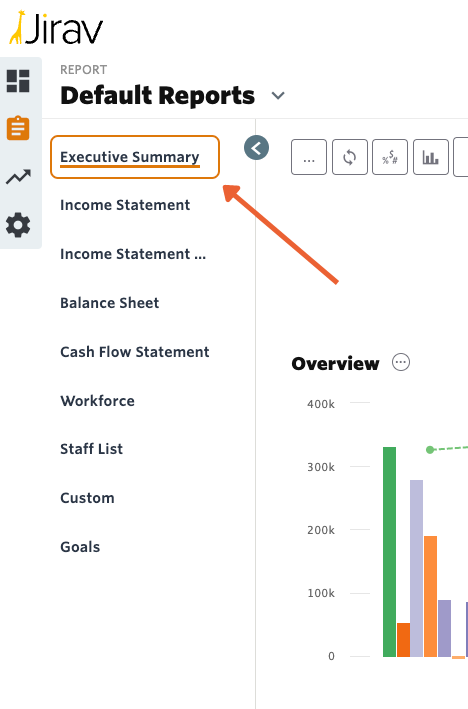
- 3. Once open, choose “Edit Columns.”
- 4. Ensure the “Report Period” shows the correct time frame (i.e. “This Year”), and choose desired granularity for the analysis (i.e. Quarterly, Monthly, etc).
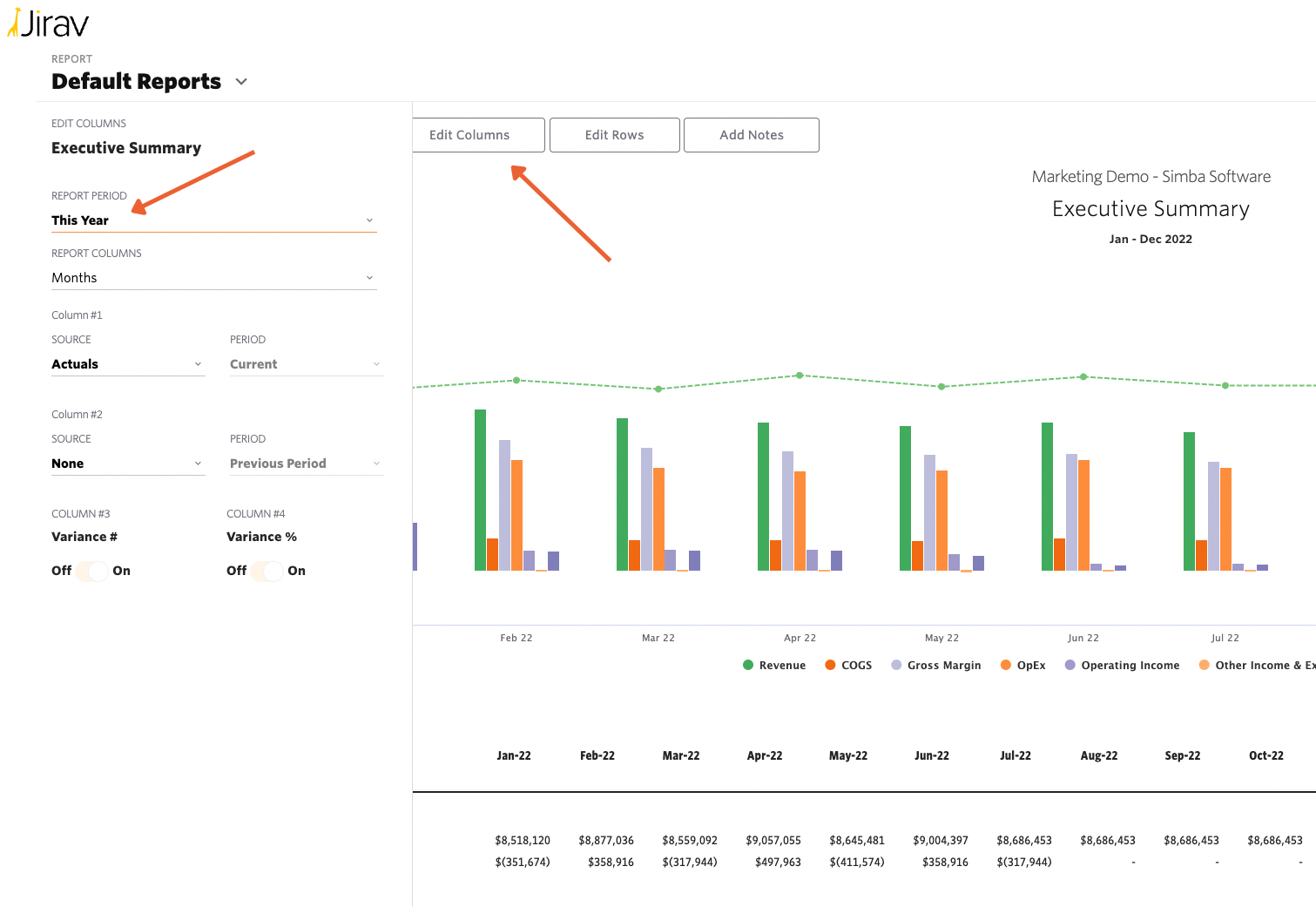
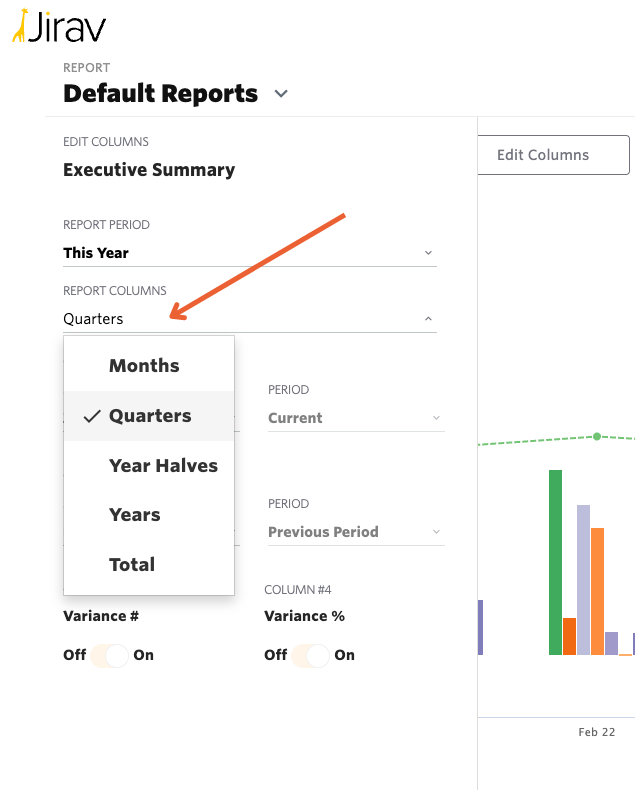
- 5. Adjust the Column #1 “Source” to the current plan (i.e. Budget).
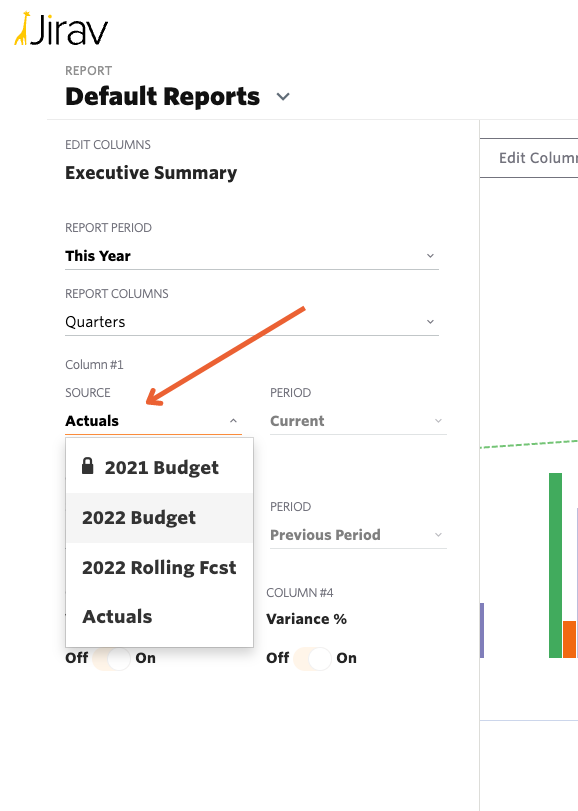
- 6. Select "Apply"—plan data should now be shown by quarter.
- 7. To add additional metrics (i.e. MRR), select “Edit Rows.”
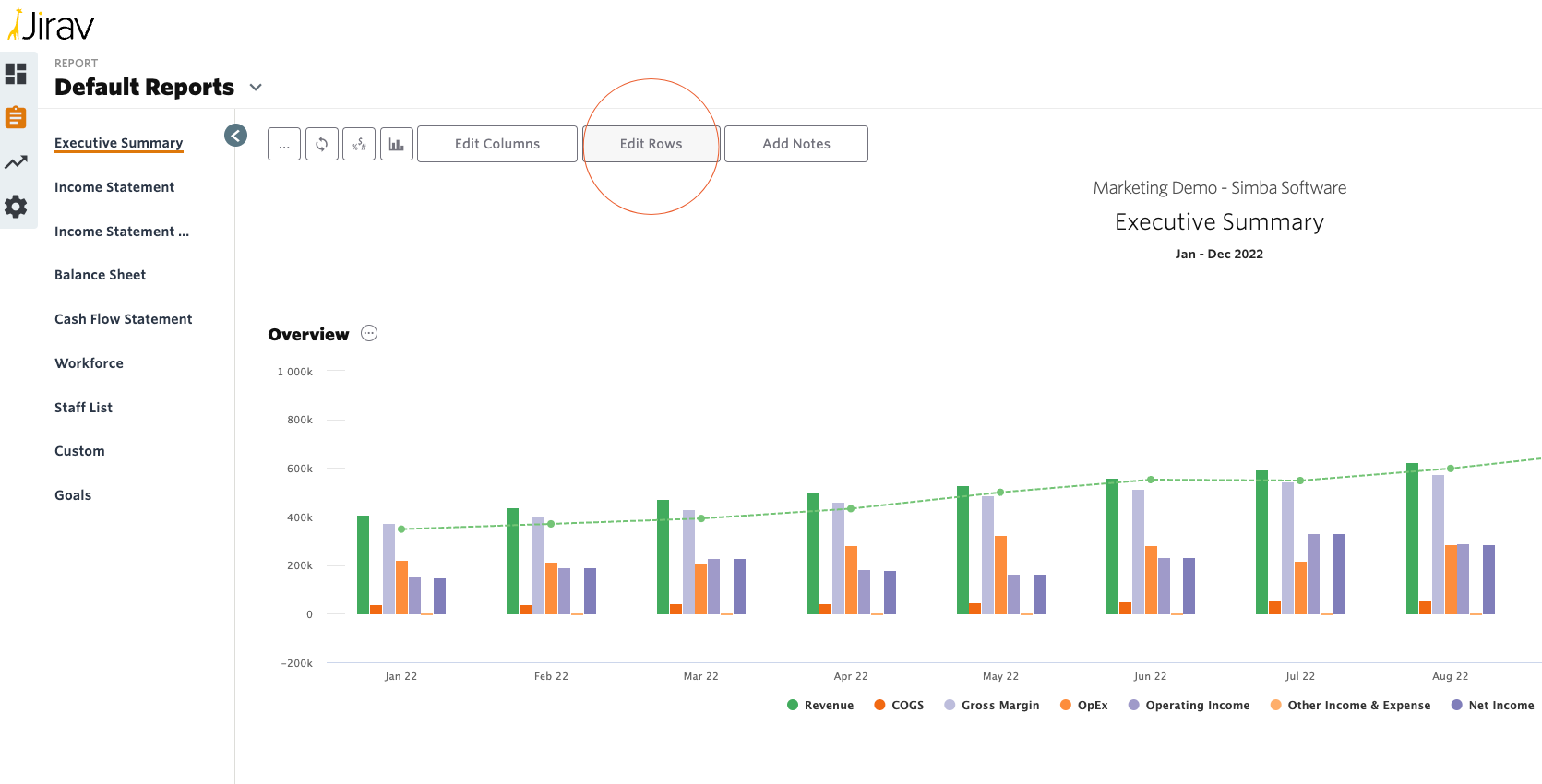
- 8. Under the “Cash” section, click on “+ Add Section.”
- 9. Name the section—in this case, “MRR Rollforward.”
- 10. In the “MRR Rollforward” section, select “+ Add Line” and name the new line “MRR Rollforward.”
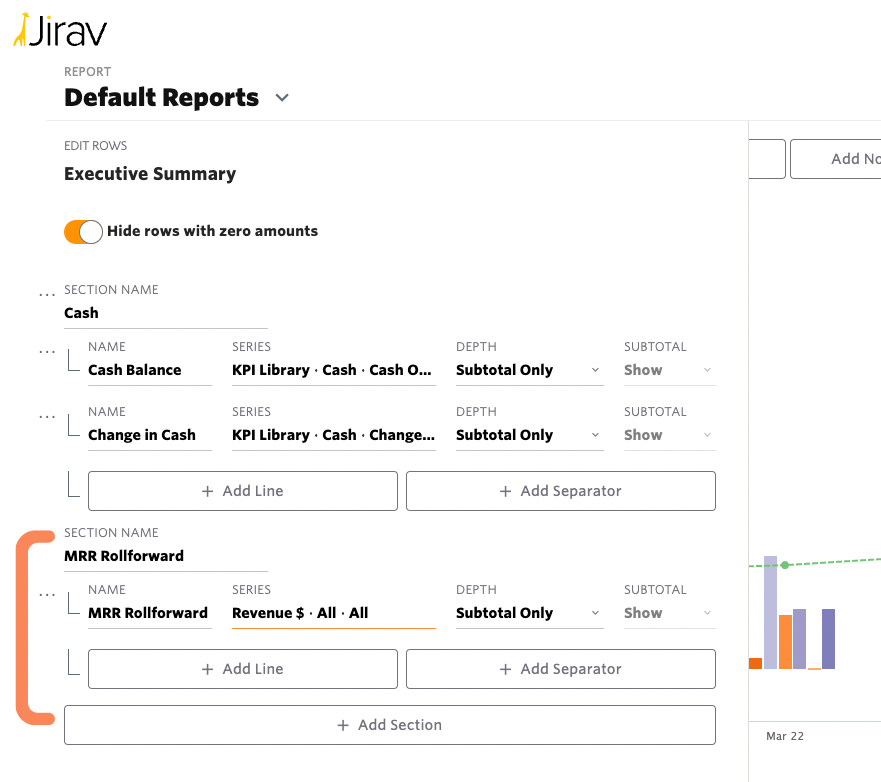
- 11. Edit the “Series” by selecting “Revenue $ - All - All” to open the UA picker. From there, select “Custom Tables” from the “Category” drop-down, then make sure “Subscription Revenue” is selected under the “Table Name” category. Then select “MRR Rollforward” in the “Line” drop-down and save.
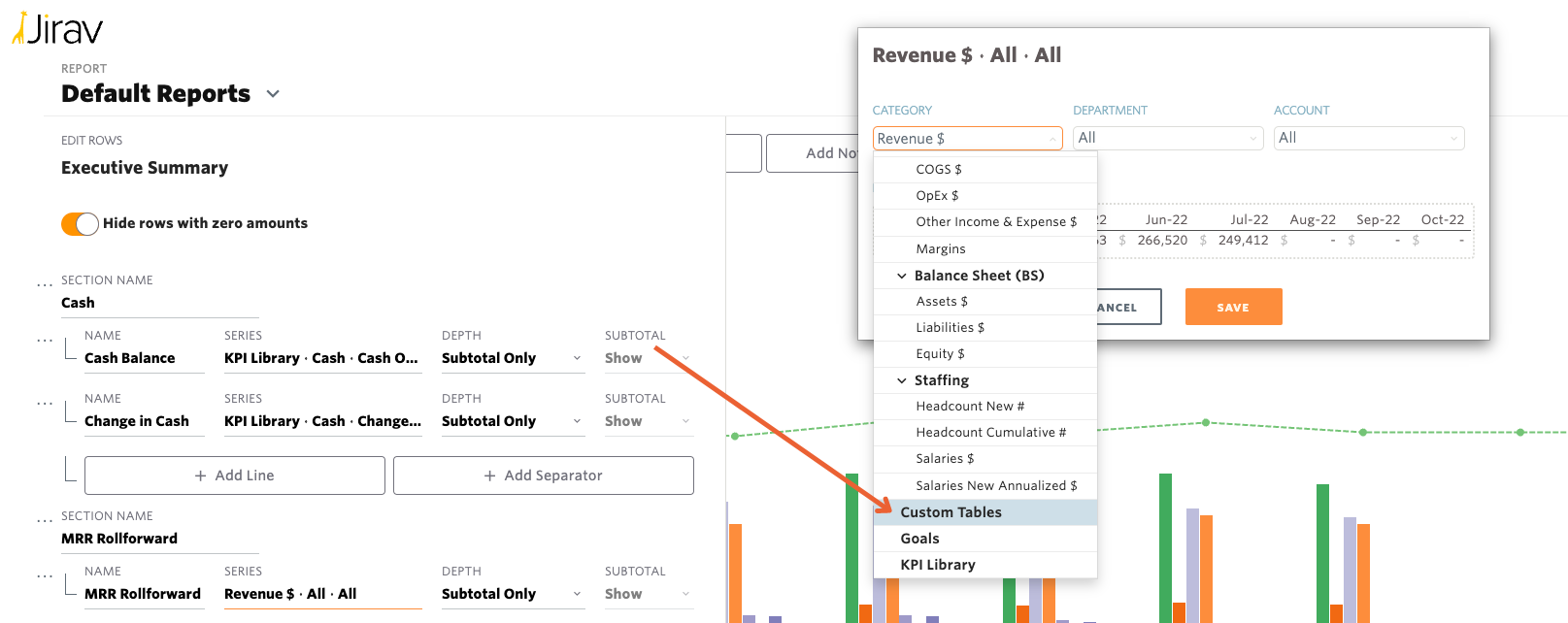

12. On the “MRR Rollforward” line, set the “Depth” to “Children up to 1st level” and the “Subtotal” to “Hide” and save.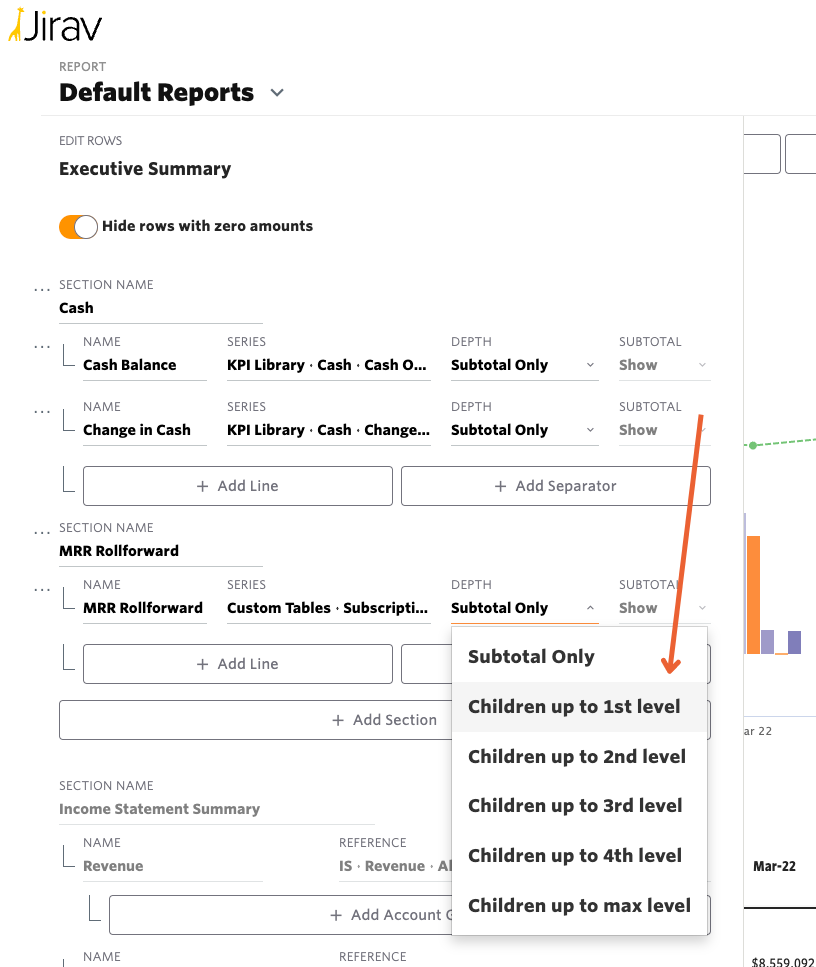
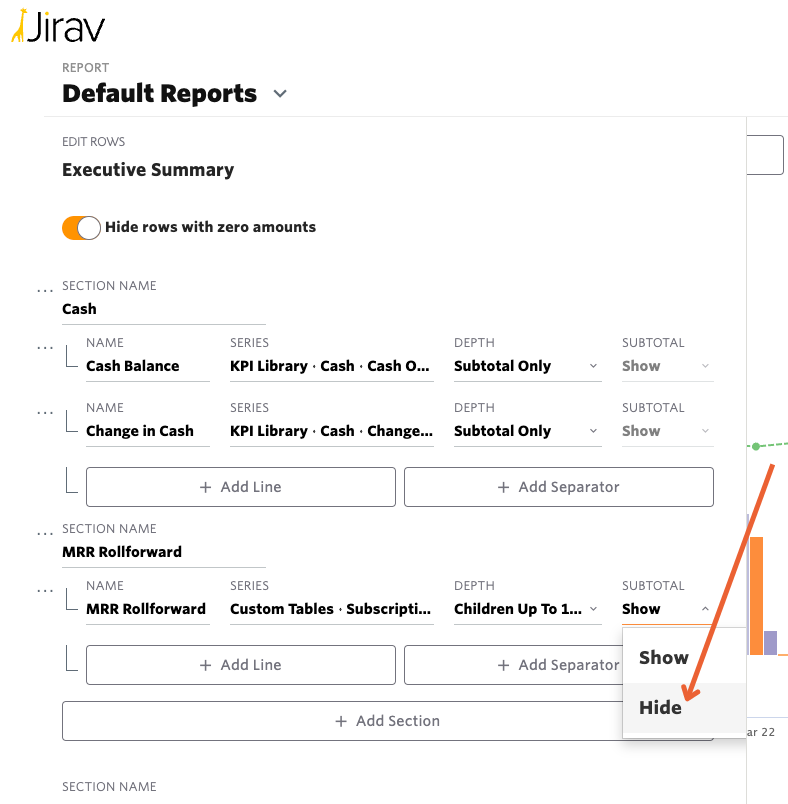
- 13. Select “Apply” to save your changes.
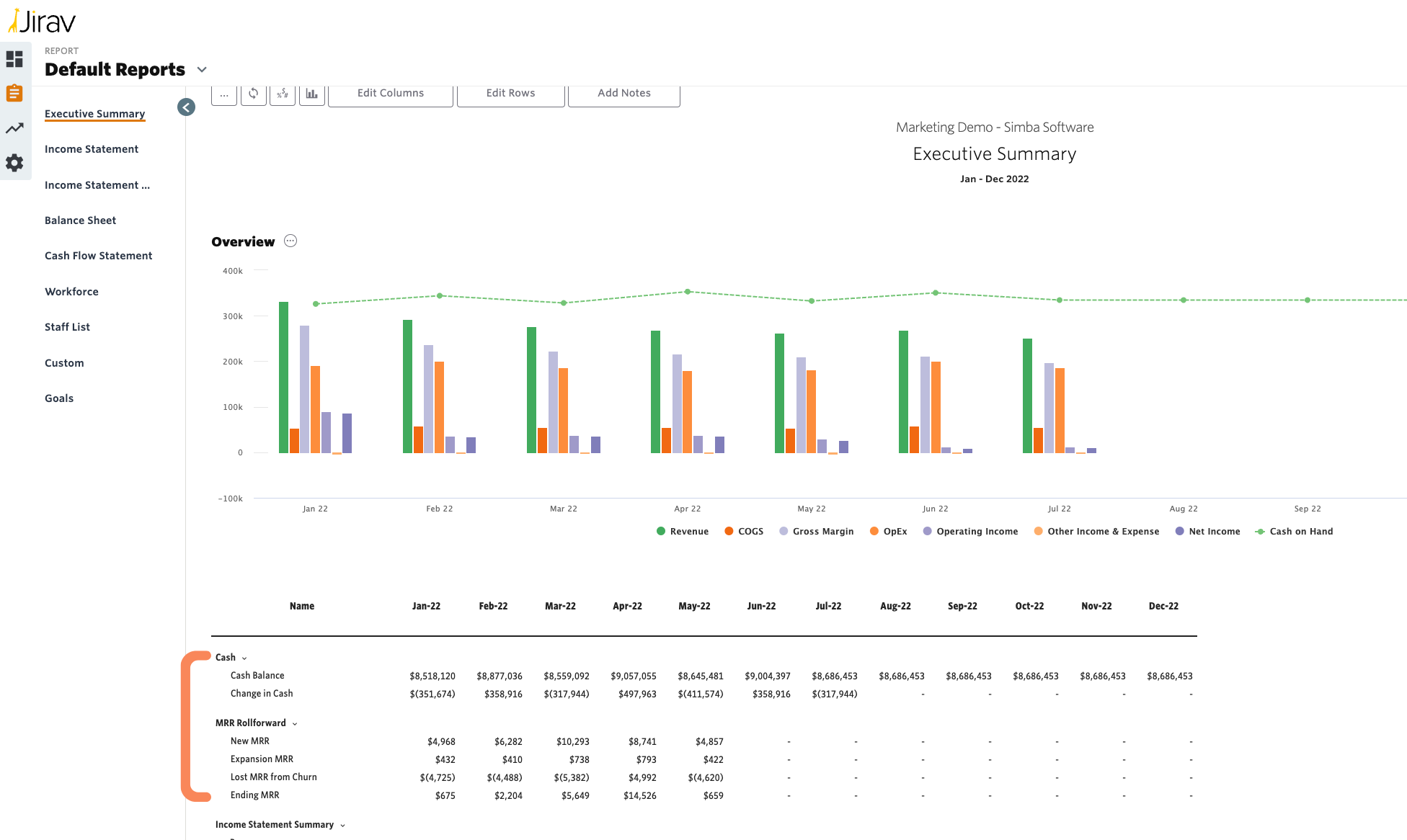
After completing these steps, you’ll see the plan data by quarter and the MRR Rollforward highlighted at the top of the report, under the “Cash” section.
Work with Jirav to create your executive summary report
Using Jirav for your own financial reporting, you'll be able to create and modify visually-stunning financial reports, including executive summaries with all of your most important key figures in one easy-to-read overview. Not only will you be able to highlight your expectations for the coming years and your YTD performance against current targets, but your executive summary reports will equip you with the insights you need to efficiently make the critical decisions necessary for your betterment of your business.
Reach out to our team to get an inside look at the platform, or tour the product for free today!





